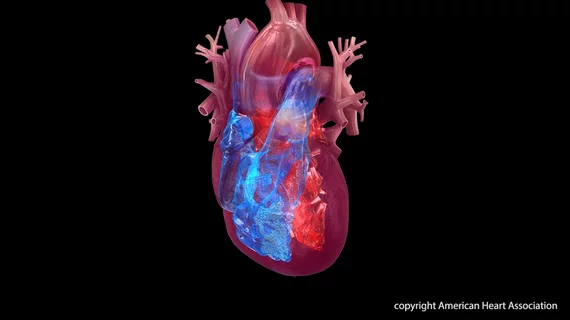CCTA detects atherosclerosis cases lost in CAC scoring blind spot
Coronary CT angiography spotted atherosclerosis in more than 40% of adults without known heart disease. In some cases, the tool detected fatty buildup overlooked via conventional scoring methods.
The findings are based on scans from more than 25,000 patients recruited for a five-year study, published Sept. 20 in the American Heart Association’s journal Circulation. In more than 5% with buildup, CCTA showed the obstruction blocked blood flow through at least one coronary artery by 50% or more.
Additionally, in participants with a CAC score of zero (no calcium buildup), 5.5% showed atherosclerosis detected by CCTA.
Doctors typically turn to coronary artery calcification scoring to screen patients at risk for heart disease who aren’t yet showing symptoms. But these findings show such scoring may have a crucial blind spot.
“Measuring the amount of calcification is important, yet it does not give information about non-calcified atherosclerosis, which also increases heart attack risk,” study author Göran Bergström, MD, PhD, a clinical physiology professor at the University of Gothenburg’s Institute of Medicine in Sweden, said Monday.
The SCAPIS investigation enrolled 25,182 participants ages 50-64 who underwent both CAC and CCTA testing. Each was randomly recruited and showed no history of prior heart attack or cardiac intervention.
Forty-two percent showed some degree of atherosclerosis, a major cause of heart attack. In 2% of these patients, blockages obstructed the main artery supplying blood to the heart; and in some cases, all three coronary arteries were clogged.
Non-calcified atherosclerosis is thought to cause more heart attacks, yet the current AHA/ACC guideline does not touch on using CCTA for preventing these deadly infarctions.
“A high CAC score means there is a high likelihood of having obstruction of the coronary arteries,” Bergström added. “However, more importantly, a zero CAC score does not exclude adults from having atherosclerosis, especially if they have many traditional risk factors of coronary disease.”
Read the entire study here.

